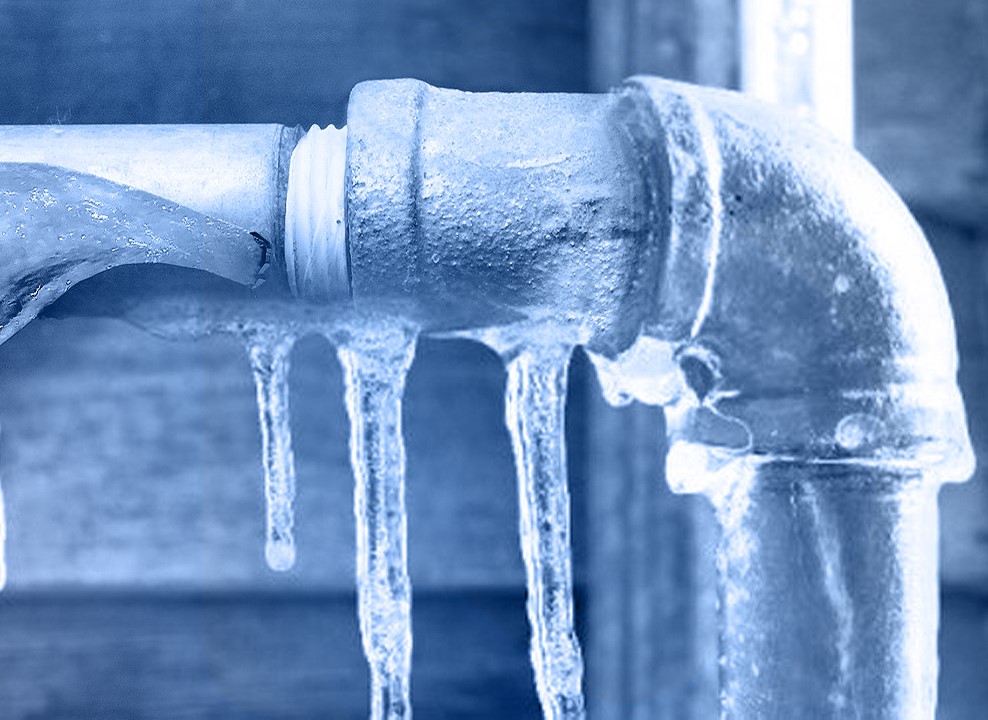Ways to Safeguard Plumbing System from Cold Weather: Critical Strategies
Ways to Safeguard Plumbing System from Cold Weather: Critical Strategies
Blog Article
Just about everyone seems to have his or her own conception about How to Prevent Your Pipes From Freezing.

Cold weather can ruin your plumbing, especially by freezing pipelines. Here's exactly how to avoid it from taking place and what to do if it does.
Introduction
As temperatures decrease, the danger of icy pipelines rises, possibly bring about pricey repairs and water damage. Recognizing exactly how to prevent frozen pipelines is critical for home owners in cool climates.
Recognizing Icy Pipelines
What causes pipelines to ice up?
Pipes freeze when revealed to temperatures listed below 32 ° F (0 ° C) for extended periods. As water inside the pipelines freezes, it increases, putting pressure on the pipeline wall surfaces and possibly causing them to break.
Threats and damages
Icy pipes can result in water supply disruptions, home damage, and pricey repair services. Burst pipes can flooding homes and cause substantial architectural damage.
Signs of Frozen Water Lines
Recognizing icy pipes early can prevent them from rupturing.
Exactly how to recognize icy pipelines
Seek lowered water circulation from taps, uncommon smells or sounds from pipelines, and visible frost on exposed pipelines.
Prevention Tips
Protecting prone pipes
Wrap pipelines in insulation sleeves or make use of warmth tape to protect them from freezing temperature levels. Concentrate on pipelines in unheated or external areas of the home.
Heating strategies
Maintain indoor rooms properly heated up, specifically areas with pipes. Open up cabinet doors to permit warm air to flow around pipes under sinks.
Shielding Outside Pipes
Yard pipes and outside taps
Separate and drain yard tubes before winter months. Install frost-proof spigots or cover outside taps with shielded caps.
What to Do If Your Pipelines Freeze
Immediate actions to take
If you presume icy pipes, keep faucets open to ease pressure as the ice melts. Make use of a hairdryer or towels taken in warm water to thaw pipes gradually.
Long-Term Solutions
Architectural modifications
Think about rerouting pipelines far from exterior wall surfaces or unheated areas. Include additional insulation to attics, cellars, and crawl spaces.
Upgrading insulation
Buy top notch insulation for pipes, attic rooms, and walls. Appropriate insulation helps keep constant temperatures and decreases the risk of frozen pipes.
Final thought
Protecting against icy pipes calls for proactive actions and quick feedbacks. By comprehending the causes, indicators, and preventive measures, property owners can protect their pipes during winter.
5 Ways to Prevent Frozen Pipes
Drain Outdoor Faucets and Disconnect Hoses
First, close the shut-off valve that controls the flow of water in the pipe to your outdoor faucet. Then, head outside to disconnect and drain your hose and open the outdoor faucet to allow the water to completely drain out of the line. Turn off the faucet when done. Finally, head back to the shut-off valve and drain the remaining water inside the pipe into a bucket or container. Additionally, if you have a home irrigation system, you should consider hiring an expert to clear the system of water each year.
Insulate Pipes
One of the best and most cost-effective methods for preventing frozen water pipes is to wrap your pipes with insulation. This is especially important for areas in your home that aren’t exposed to heat, such as an attic. We suggest using foam sleeves, which can typically be found at your local hardware store.
Keep Heat Running at 65
Your pipes are located inside your walls, and the temperature there is much colder than the rest of the house. To prevent your pipes from freezing, The Insurance Information Institute suggests that you keep your home heated to at least 65 degrees, even when traveling. You may want to invest in smart devices that can keep an eye on the temperature in your home while you’re away.
Leave Water Dripping
Moving water — even a small trickle — can prevent ice from forming inside your pipes. When freezing temps are imminent, start a drip of water from all faucets that serve exposed pipes. Leaving a few faucets running will also help relieve pressure inside the pipes and help prevent a rupture if the water inside freezes.
Open Cupboard Doors
Warm your kitchen and bathroom pipes by opening cupboards and vanities. You should also leave your interior doors ajar to help warm air circulate evenly throughout your home.

We hope you enjoyed our section about 6 Ways to Prevent Frozen Pipes. Thanks for taking time to browse our content. Sharing is caring. Helping people is fun. Kudos for your time. Kindly pay a visit to our website back soon.
Book Your Installation Report this page